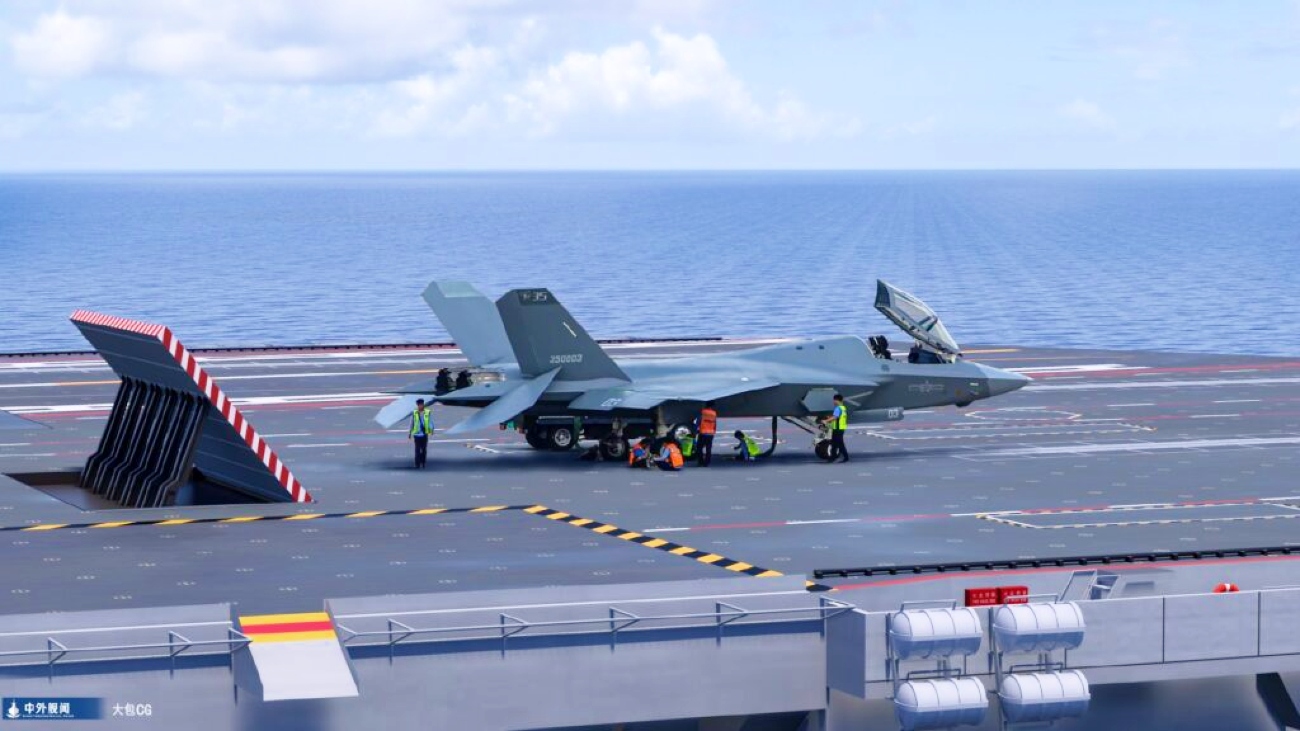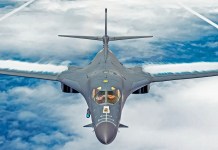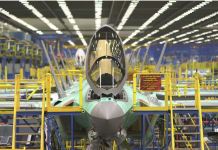Taking a massive leap towards expanding its maritime capability, China has reportedly conducted tests on a new next-generation carrier-based fighter jet, the details of which remain largely undisclosed.
A documentary aired recently on China’s state-owned broadcaster, CCTV, revealed that an unknown carrier-based fighter jet was tested aboard the People’s Liberation Army Navy’s (PLAN) first aircraft carrier, Liaoning. The test was quietly conducted earlier this year at an unknown date and location.
Currently, the PLAN operates a single carrier-based fighter jet, the J-15 ‘Flying Shark,’ which is essentially a fourth-generation fighter based on the Russian Sukhoi Su-33 aircraft, which China acquired from Ukraine in the late 1990s.
The documentary did not provide any images or information regarding the new fighter jet, but it featured footage of the J-15 taking off from Liaoning. In the documentary titled Quenching, Zhang Naigang, a crew member from Liaoning, talks about his experience with the J-15 test flight 12 years ago and the modern fighter jet now.
Moscow Slams Portugal’s Transfer of Russian Aircraft To Ukraine; Terms It A ‘Hostile Step’
“The warplane is very beautiful. It was a clear day, just like the day of the J-15’s first flight [on the aircraft carrier],” Zhang was quoted saying.

Zhang was responsible for deploying fighter jets to the ski jump ramp and initiating their takeoffs as an operator of the aircraft take-off control group unit. Zhang said he would be proud of this accomplishment for the rest of his life. The documentary also said that Zhang was also in charge of the first J-15 released on November 23, 2012, from the Liaoning.
China-Taiwan War: U.S. Readies Elite ‘DEVGRU’ Commandos To Thwart PLA’s Potential Invasion – Media
While nothing is known about the secretive next-generation aircraft tested by China, EurAsian Times understands that the country has been developing and testing a next-generation stealth carrier fighter jet.
Chinese experts told Global Times on September 14 that the CCTV report formally confirmed China’s current possession of a new carrier-borne aircraft that is prepared for use, significantly enhancing the capability of Chinese carriers.
The report also confirmed that the new warplane was operational not only on China’s third aircraft carrier, the Fujian, which is outfitted with electromagnetic catapults, but also on the previous two carriers, the ramp-equipped Liaoning and the Shandong.
Though this new carrier-based fighter remains shrouded in secrecy, as almost all Chinese military programs, the documentary has triggered speculation that China may have tested the J-35 stealth fighter, which has been under development for years.
Speculations Run High That China Tested J-35
China is allegedly developing a new fighter jet named J-31 or J-35 for use on its aircraft carriers. The jet, which had its first flight in 2012, will be employed in mix-and-match formations with the J-15s currently operated by the PLAN.
Months before the documentary was aired, during Liaoning’s refit in February this year, a full-scale mockup of a J-35 stealth fighter jet covered in waterproof material was spotted performing flight deck dispatch tests aboard the aircraft carrier. Subsequently, more visuals flooded the internet, suggesting that the Liaoning had set sail with mock-ups of the J-35 and the J-15.
A previous report by the EurAsian Times also suggested that the sighting of the J-35 mockup on the Liaoning hinted at the stealth fighter being deployed on China’s first two carriers, both lacking catapults. The third carrier, Fujian, is currently undergoing sea trials.
Military analysts have long maintained that Fujian would host the next-generation J-35 carrier-based fighter jet as it uses catapults instead of the ‘ski jump’ ramps for aircraft takeoffs.
However, if the recently tested fighter is confirmed to be the J-35, it is likely to be deployed on all three aircraft carriers of the PLAN. China’s development of the J-35, its second fifth-generation fighter jet, has garnered significant attention as it seeks to bolster its aircraft carrier capabilities.
The J-35, created by Shenyang Aircraft Corporation, is positioned as the Chinese equivalent of the Lockheed Martin F-35 and is specifically designed for use on aircraft carriers.
In 2012, the J-35 was initially shown as a scale model at the Zhuhai Airshow. Since then, the aircraft has undergone rigorous development and prototype phases.
The pictures released in February suggested that the jet has been nearing a critical testing stage, which raises hopes for its eventual incorporation into the People’s Liberation Army (PLA) air force. This has further given rise to speculation that the J-35 may have been tested.

When the J-35 made an appearance atop the Liaoning, Collin Koh, a senior fellow at the S. Rajaratnam School of International Studies in Singapore, pointed out: “One most straightforward assessment is that the Liaoning, which has long been designated as a test bed for PLA carrier capabilities, is conducting experiments on the J-35 as a viable carrier-borne fighter jet.”
Several Chinese experts have suggested that the J-15 will continue to serve in carrier groups, using its large payload capacity for anti-ship and strike missions, while the J-35 would concentrate on air superiority and breaching enemy defenses. Additionally, owing to its medium size, there would be more J-35s on the carrier than the larger J-15s, which would boost its operational flexibility.
The combination of the J-35 and the J-15 is projected to significantly enhance Chinese carrier capabilities. This advancement underscores China’s strides in naval aviation and its evolving role in maritime security dynamics, especially since the US has a massive fleet of carrier-based F-35 stealth fighters as well as the seasoned F/A-18 Super Hornets.
The documentary, released on September 13, also featured footage from the Fujian, China’s third and most sophisticated aircraft carrier, during a sea trial in May. It did not display any real fighter jet launches but rather a simulated launch scenario utilizing its electromagnetic catapult system.
- Contact the author at sakshi.tiwari9555 (at) gmail.com
- Follow EurAsian Times on Google News




